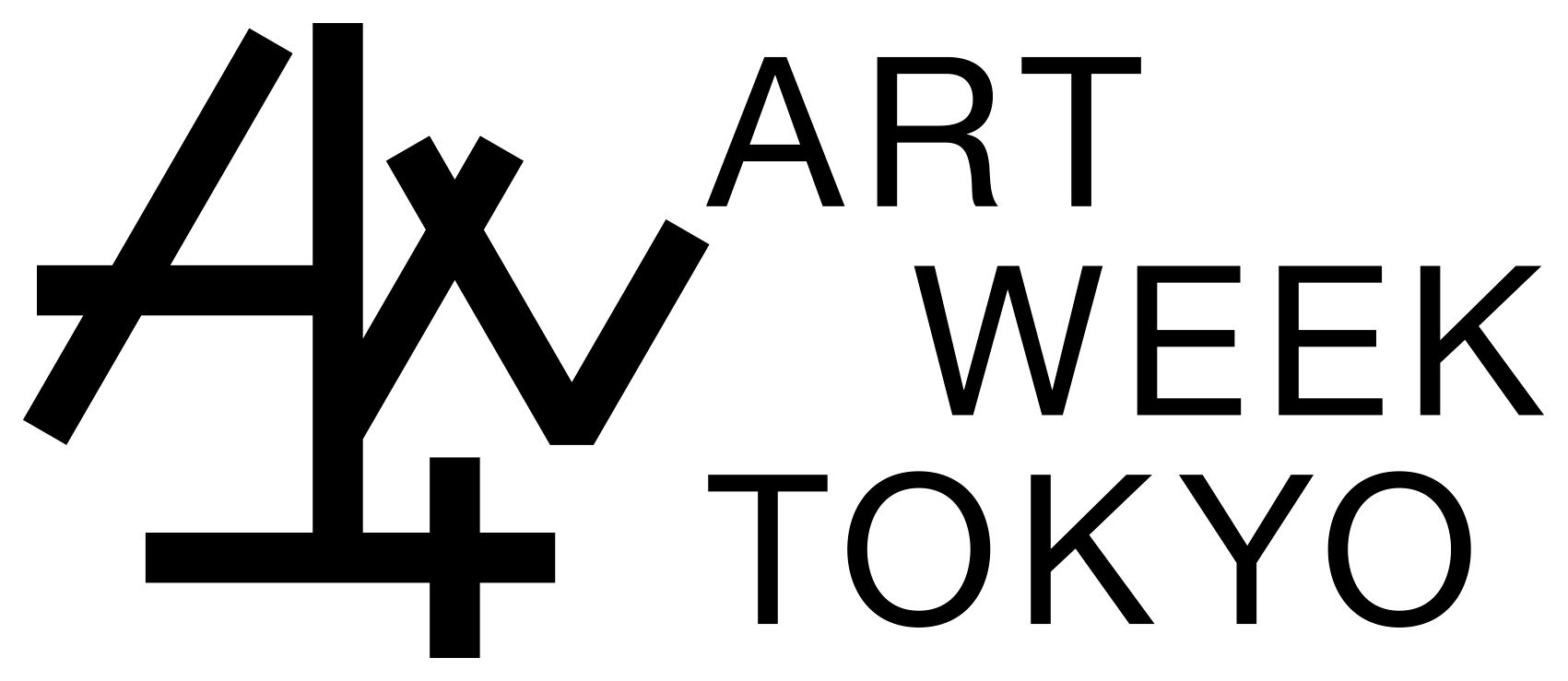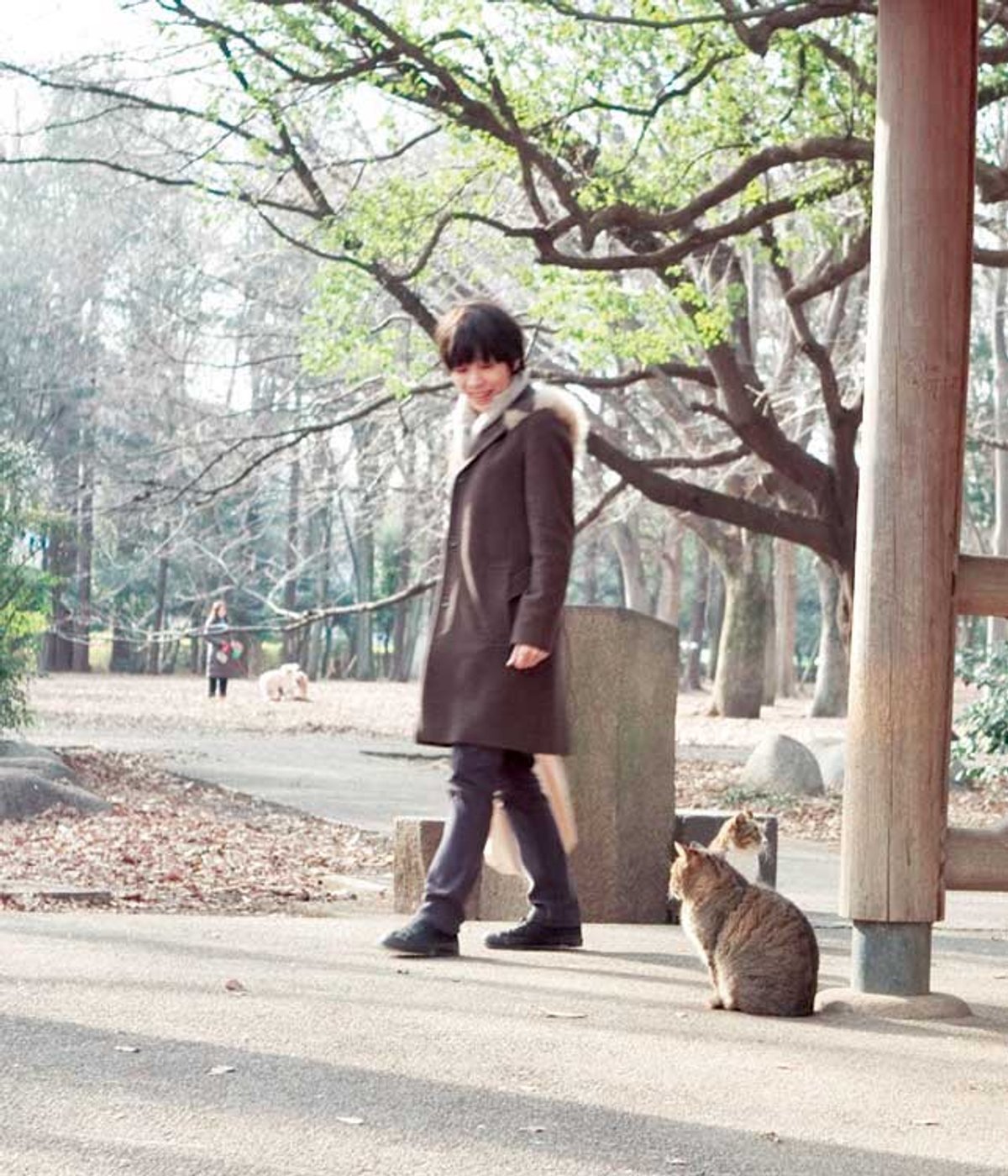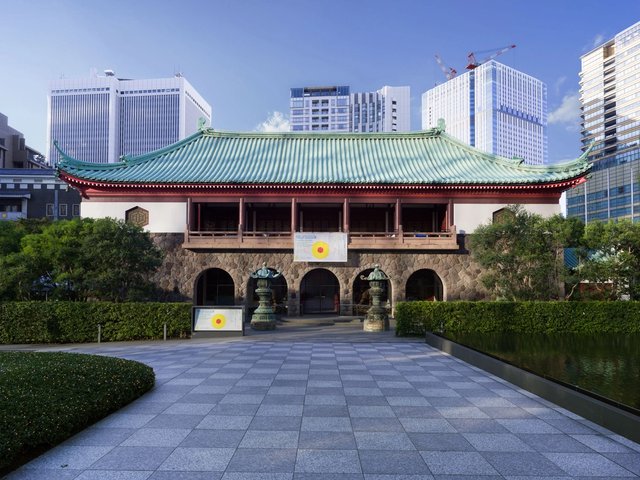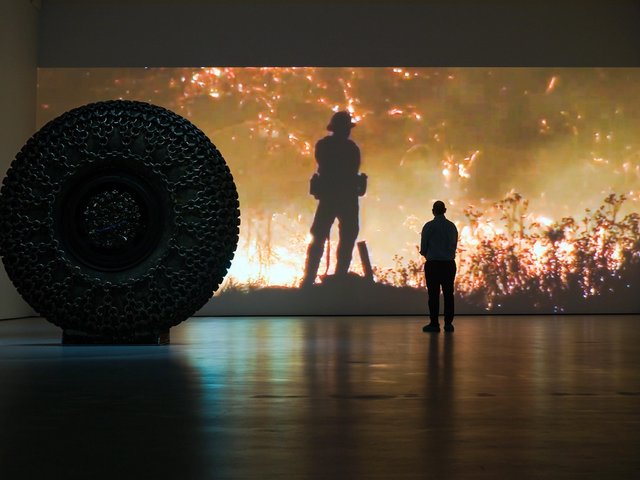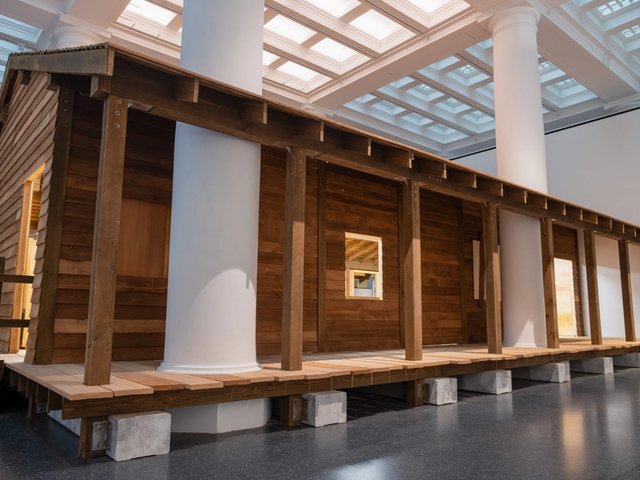Rei Naito is one of the best-kept artistic secrets in Japan. With disarmingly simple materials, from pebbles to balloons to wooden figurines, her installations generate profound experiences of the interconnectedness of the world. Rei Naito: come and live—go and live is one of her most ambitious exhibitions yet, conceived for two venues. Its first half took place earlier this year at the Tokyo National Museum, where Naito worked with prehistoric artefacts to show how even the most seemingly inconsequential objects have incredible stories to tell. At Ginza Maison Hermès Le Forum, Naito has responded to Renzo Piano’s glass-brick architecture by creating an installation that changes appearance over the course of the day. If the museum can be viewed as a mausoleum, Naito seeks an “immersion in life” in the ephemerality of the contemporary art space. In a rare interview, she opens up about her extraordinary art practice.
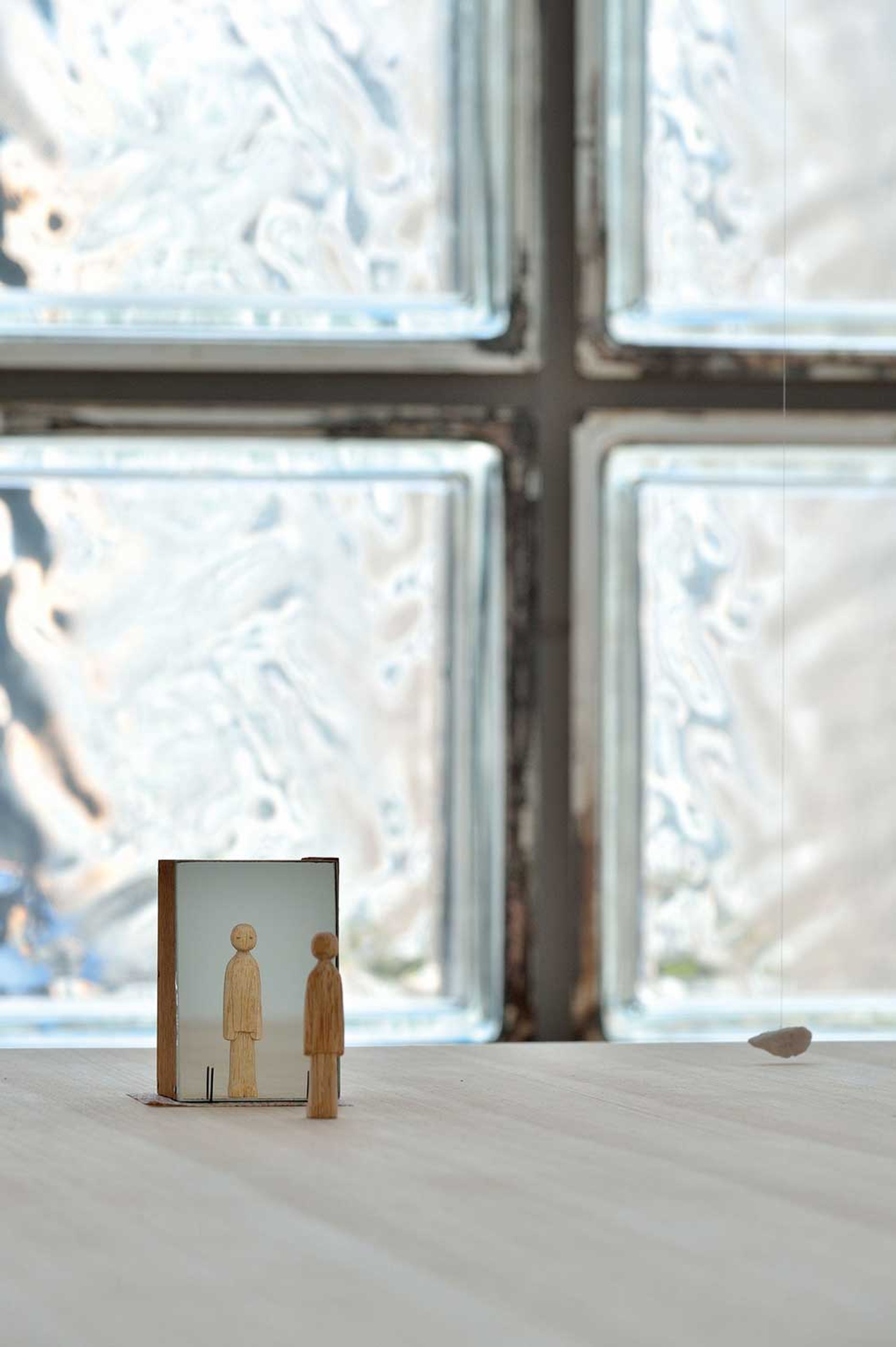
Rei Naito has created an installation at Ginza Maison Hermès Le Forum responding to Renzo Piano’s building Naoya Hatakeyama/Courtesy Fondation d’entreprise Hermès
The Art Newspaper: Although your installations initially look minimal or empty, it takes time to see them. In the first room at the Tokyo National Museum, different details emerged from the objects as one’s eyes adjusted to the dimness. At Le Forum, certain elements disappear as natural light gives way to artificial light. Do you ever think of yourself as working with time?
Rei Naito: Time, space, natural phenomena, the people there (in mind and body), the work. These are indivisible, coincidental entities for me. It’s impossible to take it all in as soon as you step into the work. Some things you sense gradually with the actions of the living people in the space. Others can’t be sensed unless everything is still. And the experience of the space shifts every moment in the changing light throughout the day. Whoever is there comes away with their own unique experience of the space.
I get more of a real sense of life from the unexpected “animas” that emerge out of that kind of indeterminacy or potentiality than when everything is clear. Not being able to know the world in its entirety and just being there as an “anima” along with all the other “animas” enveloped by the entire world—that’s our experience of the world itself, which is a great joy to me.
In your Tokyo National Museum installation, the clay impression of a child’s foot from the late Jōmon period (2000BC- 1000BC) is a profound statement of how art derives as much meaning from negative space, or absence, as positive representation. What attracted you to this object and how does it connect to the other works?
The first thing I felt was sympathy for the person, most likely a parent, who made the impression of the dead child’s foot and wore it as a keepsake until their own death. Then I realised that that footprint was left by a person with a mind and a body—a life that was actually as alive as I am now. Was there any way for me to have a true sense of that life? I kept asking myself this question. One day I happened to place the object in the sunlight and the shadow of the footprint suddenly appeared before me, while at the same time I could see my own shadow right beside it. For the first time I was able to get a visceral sense of that child who had stood, walked and lived on the same earth as me. Bathed in the same sunlight as it was then, that footprint continues to exist alongside my shadow in the space of the work.
You are known for making paintings that initially look blank before gradually revealing different colours, such as your color beginning (2020-) series of acrylic-on-paper works. Your new color beginning/breath (2023-) paintings use colour more directly. They resemble palette tests, abstract compositions and landscapes all at once. Are the two series related? What does colour mean to you?
The two series have completely different motivations. The color beginning paintings are about discovering the “moment that colour manifests itself”. In contrast, color beginning/breath is about emptying my mind in order to face “scenes of life on earth”. In 2022, when I was preparing for a solo exhibition at Pinakothek der Moderne in Munich, I came to the realisation that both the living and the dead have a longing for “scenes of life on earth”. Once I recognised that it is human nature to have this longing and to want to depict those scenes, I gave myself permission to make landscapes, even though the initial idea was to paint without any intention. To me, colour is life.
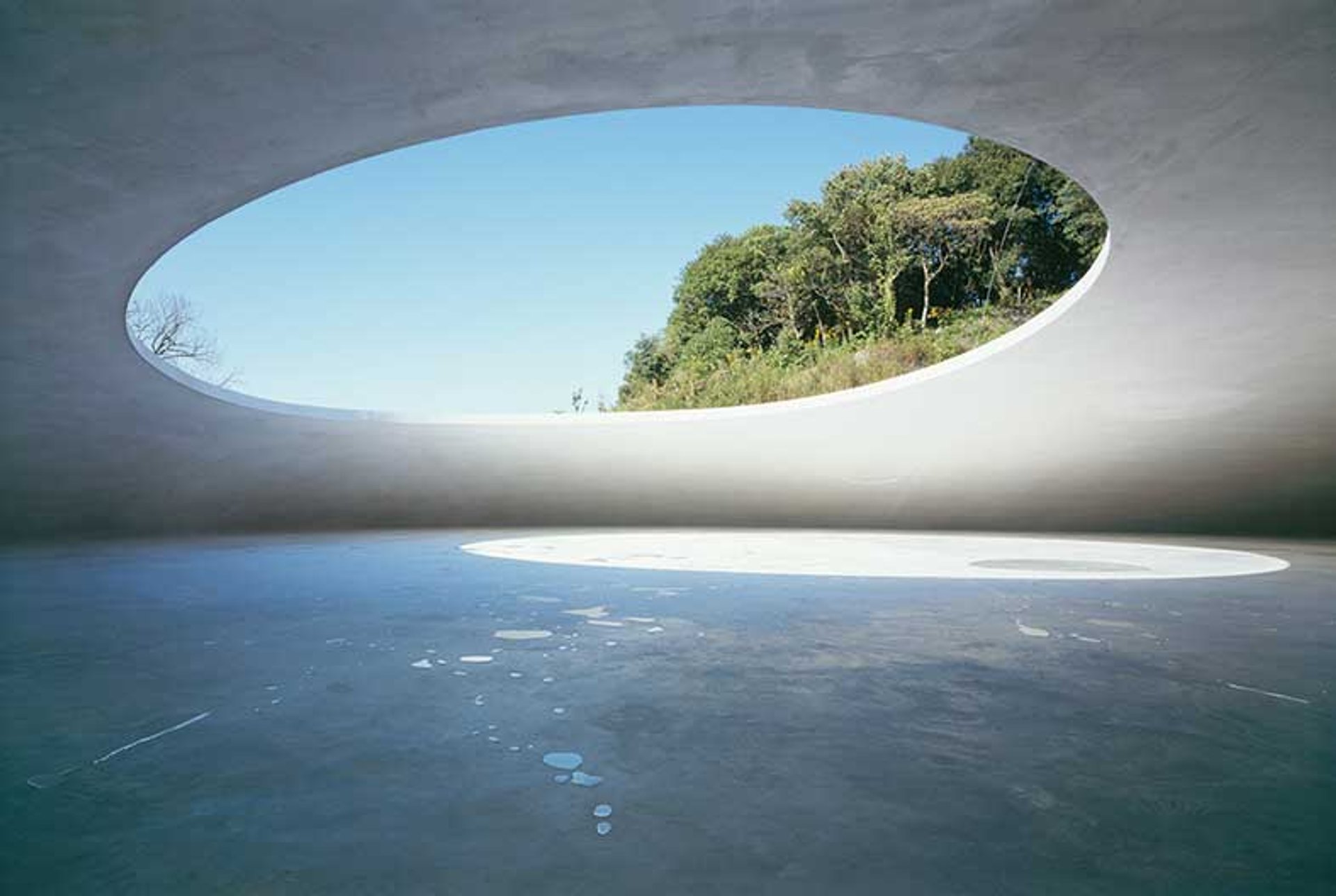
Matrix (2010) harmonises with nature at the Teshima Art Museum Photo: Ken’icyhi Suzuki
You often compose poems that accompany your works. One poem for the current exhibition reads, “May life be life, / and its presence permeate the realm of the living / May death be death, / and its presence permeate the realm of the living.” Is writing poetry part of your thought process?
Poetry leads to artistic creation for me, and my poems are as important to sustaining my life as my art is.
Many people describe visiting your Matrix (2010) installation at the Teshima Art Museum as a deeply meditative experience. Do you think of yourself as trying to create spiritual experiences through art?
I’m not conscious of my works as spiritual experiences, but like anyone else I do have a sense of the world or nature as being something that far surpasses the human realm. Along with awe, I also find joy in that knowledge and want to express my gratitude for it.
• Rei Naito: come and live—go and live, Ginza Maison Hermès Le Forum 8-9F, 5-4-1 Ginza, Chuo-ku, until 13 January 2025


